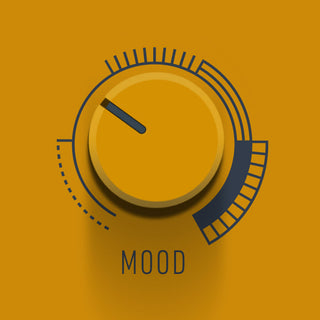The Birth of Fuzz Tone
The classic ’60s fuzz pedal changed guitar forever. When that woolly, saturated roar first hit a cranked amp, it created a sound that was bigger, rawer, and more vocal than distortion or overdrive had ever been.
This was the Hendrix fuzz tone — expressive, sustaining, and touch-sensitive, able to move from smooth leads to snarling riffs with just a turn of the guitar’s volume knob. It wasn’t just another effect; it became part of the player’s voice.
Even today, the 60s fuzz guitar sound remains one of the most iconic tones in rock history: round, saturated, and deeply expressive.
A Brief History of the Classic '60s Fuzz Sound
The fuzz revolution didn’t just shape guitar tone — it shaped rock music itself.
It began in the early ’60s with the Maestro FZ-1, a crude circuit that delivered a buzzing, woolly sustain unlike anything before it. But the real breakthrough came with the Dallas-Arbiter Fuzz Face, a pedal that became the voice of psychedelic rock and electric blues.

With it, legends like Jimi Hendrix unleashed wild, expressive tones that could scream, whisper, or sing depending on how he attacked the strings. David Gilmour later gave fuzz a soaring, melodic voice in Pink Floyd’s soundscapes, while players like Eric Johnson and Billy Gibbons used it for everything from Texas swagger to liquid sustain.
This was fuzz at its purest — smooth yet saturated, unpredictable yet deeply responsive.
Iconic Pedals That Shaped This Sound
-
Dallas-Arbiter Fuzz Face (germanium & silicon versions)
-
Analogman Sun Face
-
Dunlop Hendrix Fuzz Face
-
Fulltone ’69 Fuzz
-
Wampler Velvet Fuzz (low gain setting)
Artists and Songs That Defined the Tone
-
Jimi Hendrix – “Hear My Train A Comin’” (live at Berkeley): Fuzz Face in its purest form—raw, reactive, and deeply expressive.
-
Billy Gibbons (ZZ Top) – “Just Got Paid”: Classic Texas fuzz tone with a saggy, touch-sensitive response.
-
Gary Clark Jr. – “When My Train Pulls In” (live): Smooth, mid-gain fuzz with vocal-like quality and dynamic blues phrasing.
-
John Frusciante – “Dani California” (solo section): Fuzz Face-like saturation that maintains clarity and detail in a melodic lead.
-
Isaiah Sharkey – “Quiet Moments”: Modern soul-funk guitar with rich, vintage-voiced fuzz and dynamic control.
How ’60s Fuzz Works: Saturated, Warm, and Responsive
The defining characteristic of this style of fuzz is germanium- or silicon-based soft clipping, with minimal filtering and reactivity to input level. It cleans up beautifully with the guitar’s volume knob, and offers dynamic control from smooth sustain to gritty breakup.
How the Kernom MOHO Morphs Vintage Fuzz Sounds
On the MOHO, MOOD Zone 2 is tuned to reproduce this sweet spot. You’ll find:
-
Thick, warm fuzz with rounded edges
-
Responsive dynamics and a natural bloom
-
Optional sub-octave grit with the ELECTRICITY knob
Unlike vintage fuzzes, which were often temperamental and harsh, the MOHO lets you shape the tone exactly as you like—without losing the vintage soul.
Recommended MOHO Settings for '60s Fuzz tone
To dial in the 60s Mojo, start around 9 to 11 o’clock on the MOOD knob.
Recommended Settings:
-
MOOD: 9 to 11 o’clock
-
FUZZ: Medium to high (11 to 2 o’clock)
-
PRE TONE: Noon for balance, left for warmth
-
POST TONE: Slightly right for definition
-
ELECTRICITY: Off (center) for classic tone, left for octave-down sag
-
VOLUME: Adjust to taste or push your amp into vintage breakup
Pro Tips
🎛️ Want Gilmour smoothness? FUZZ medium, POST TONE right, MOOD at 10 o’clock.
🎛️ Want Hendrix snarl? PRE TONE left, MOOD at 11 o’clock, ELECTRICITY left.
Roll back guitar volume for cleanup. Pair with wah for Hendrix-style tones.
🎥 Watch the Classic Fuzz in Action
See and hear MOOD Zone 2 bring Hendrix, Gilmour, and classic fuzz tones to life with modern precision.
Here is the preset to get a Classic ’60s Fuzz tone with the MOHO:

Tone Characteristics
|
Attribute |
Description |
|
Dynamic Response |
Smooth, touch-sensitive |
|
Compression |
Moderate with soft bloom |
|
Frequency Profile |
Rich mids, smooth top end |
|
Texture |
Creamy, woolly, vintage fuzz |
|
Playing Feel |
Expressive, sustaining, musical |
Perfect for vintage blues, psych rock, soulful leads, and stacking with uni-vibe, phaser, or analog delay.
Bonus: Control it Like Never Before
Vintage fuzz tones were often unpredictable. With the MOHO, you retain the soul of those circuits while gaining modern control—MIDI, expression, and preset switching make this tone live-gig friendly and studio flexible.
Want to morph between clean and full fuzz with an expression pedal? You can. Want to call it up instantly in your live rig? No problem.
Before you go back playing
- Download the Grunge Fuzz Preset for the MOHO
- Watch the full tutorial to make the most of the MOHO
- Explore the Kernom MOHO Product Page
- Discover the RIDGE (Multi-Overdrive) and the ELIPSE (Multi-Modulation)
- Subscribe to our Newsletter: Weekly presets & inspiration
Follow @Kernomofficial for more pedal insights

by David Joly
David is a passionate musician whose main instrument is drums, but he also plays guitar and keyboards. With experience both in the studio and on stage, he combines his engineering and marketing skills to inspire today’s musicians.
